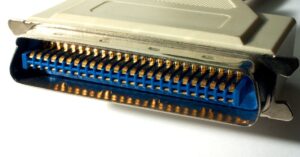Why are my lights flashing?

Are you experiencing flickering lights in your home? The problem is almost always a bad connection somewhere, but it can be difficult to pinpoint exactly where it happens. Here are some of the most common reasons why this happens:
loose light bulb
An improperly installed bulb may cause flickering due to intermittent contact. This often occurs with screw-on bulbs. Tightening the bulb may solve the problem.
defective light bulb
Damaged or broken bulbs, especially old ones, often flicker. If this is the case, simply replace the bulb with a new one. Some LED bulbs can also flicker because they are sensitive to light fluctuations.
The dimmer switch is not compatible.
If you have a dimmer switch, this could be the reason your lights are flickering. Using LED or CFL bulbs with an old dimmer switch can cause flickering due to incompatibility. In fact, many LED bulbs only work with a specific type of dimmer.
voltage fluctuations
Changes in electrical loads in the same circuit can cause voltage fluctuations, resulting in flickering. Watch for flickering. If it happens when appliances are drawing a lot of power, the problem may be voltage fluctuations. You can use a voltmeter to check for large voltage drops, but it’s best to have an electrician check it.
overloaded circuit
Plugging too many appliances into the same circuit can overload it, causing lights to flicker. This often happens in older homes where the control panel can’t handle the load. If you suspect this is the case, start by reducing the load. If you want to think strategically about this, upgrading your control panel or adding more circuits is an option for you.
Light switch is faulty
A worn or faulty light switch can cause inconsistent contact, resulting in flickering. Move the switch slightly. If the flickering changes with movement, the switch is likely faulty and should be replaced.
loose wires
Loose wiring in light fixtures, circuit breakers, or electrical panel can cause flickering and pose a fire hazard. Because loose wiring is a serious problem, it requires inspection by a professional electrician. Old wiring poses a risk and should be replaced. You may suspect loose wiring if lights only flicker in certain rooms at intervals and simpler solutions do not apply.
High energy consuming devices
Running large appliances such as refrigerators or air conditioners can temporarily consume power and cause flickering. If the flickering only occurs when these appliances are turned on, this may be the problem.
electrical panel problems
A faulty electrical panel may cause flickering across multiple lights or areas. If the flickering is widespread or random throughout your home, the electrical panel is the problem. An electrician can inspect the panel and repair it if necessary.
Loose service connector connections
Loose connections in the main service cable can cause flickering and should be checked by a licensed electrician. This is a serious problem that requires a licensed electrician. He will check the service conductors connected to your home for any loose connections. You can suspect this problem if multiple lights on different circuits are flickering.
A specific problem with loose connections is “hot wire loss.” Hot wire loss occurs when one of the two hot wires that supply power to your home from the utility company is cut or broken. This problem results in an incomplete power supply, where half of your home’s circuits may not work properly, or you may experience flickering, blackouts, or intermittent performance. Hot wire loss can be suspected if some circuits in your home’s home are tripped, while others do not. Another sign of this is if turning on a large 240-volt appliance (such as a furnace, dryer, or water heater) temporarily restores power to some of the affected circuits or reduces the flickering. It can also be a problem if appliances like your furnace or water heater take longer than usual to heat up, indicating a low power source.
If you suspect a power outage, call your utility company and tell them that half of your home is without power. They will inspect and fix the problem, often for free, since the problem lies with the service wiring outside your home.
If you need to replace the wires after identifying the problem, NNC It has a wide catalog of cables to choose from.



